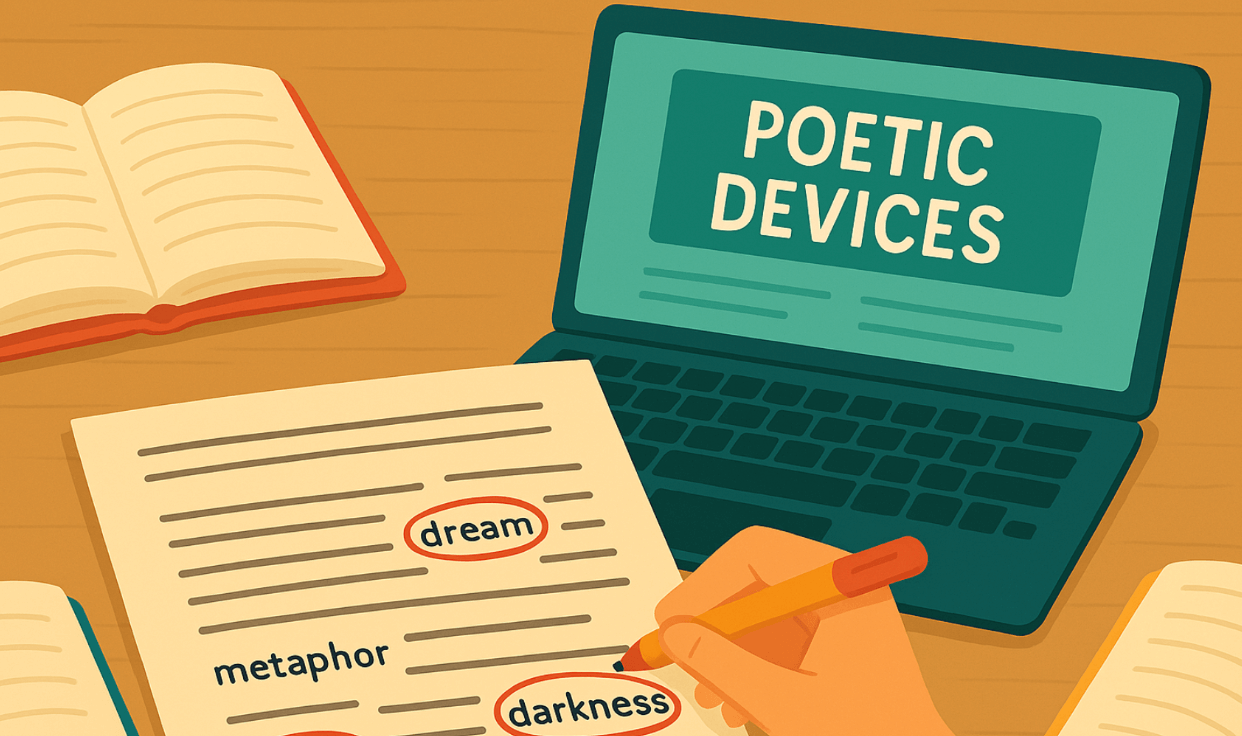Picture this: you’re at your desk, staring at a blank page that seems to mock you with its pristine emptiness. You’ve got your coffee, your playlist, and maybe even a candle burning for that “creative vibe.” Yet, the words refuse to appear. Instead, your mind spirals: Where does the story even start? What comes next? Is this idea even worth pursuing? Do I even know how to write? Where do I begin to write a book outline?
Enter the book outline, your creative lifesaver. Think of it as Google Maps for your book writing journey—except it won’t recalibrate mid-sentence or urge you to “make a U-turn.” A solid outline doesn’t just keep you on track; it gives you direction when the road ahead is foggy. It transforms the overwhelming task of writing an entire book into manageable chunks.
Whether you’re tackling a sprawling novel, crafting a nonfiction book outline or even just trying to figure out how many chapters you need, a great outline is your best friend. In this guide, we’ll walk you through step-by-step strategies for building an outline that works for you—from bare-bones basics to detailed blueprints. By the end, you’ll be ready to turn that blank page into your next bestseller. Let’s start outlining!
Your Creative Compass: Outlines as a Superpower
Ask any successful writer about their secret weapon, and chances are they’ll point to their outline. It’s the unsung hero of the creative process, turning chaos into clarity. Whether you’re outlining novels, weaving a fictional universe, or organizing a nonfiction argument, a solid outline is your creative compass, guiding you through the twists and turns of your writing journey.
For fiction writers and aspiring authors, outlines ensure that your story stays cohesive—no dangling subplots or wandering characters. They keep your key plot points on track, from the inciting incident to the triumphant (or tragic) finale. For nonfiction writers, outlines act as a skeleton for your ideas, making your arguments clear and logical while helping you anticipate what your readers need next.
The benefits go beyond structure. Outlines can vanquish writer’s block by giving you a clear starting point for each scene or chapter. They prevent the dreaded “sagging middle,” keeping your momentum strong. And when new ideas pop up, your outline ensures they fit seamlessly into the bigger picture.
Even bestselling authors lean on outlines. J.K. Rowling famously sketched out detailed chapter summaries for Harry Potter, while Randy Ingermanson’s Snowflake Method helps writers develop complex stories step by step. Outlines don’t stifle creativity—they amplify it like a step-by-step guide, freeing you to focus on the fun part: writing.
So, ready to harness your outline superpower? Let’s dive in!
Your Publishing Journey Awaits – Start NowFrom Sticky Notes to the Snowflake Method
Outlining isn’t one-size-fits-all—it’s more like a buffet of options. Whether you’re a visual thinker or a linear planner, there’s a method for you. Let’s break it down so you can find your perfect match.
1. The Bare-Bones Outline
This minimalist approach is great for writers who prefer flexibility. Summarize each chapter in one to three sentences, focusing on the main idea or event. It’s quick to create and easy to adjust as your story or ideas evolve.
2. The Detailed Outline
For those who thrive on structure, a detailed outline maps out everything: key plot points, major scenes, character arcs, and even minor details. It’s especially useful for complex novels or nonfiction works with layered arguments. Think of it as a full itinerary for your writing trip.
3. Visual Tools: Index Cards, Sticky Notes, and More
If you’re a visual writer, tools like index cards or sticky notes can help you organize your thoughts. Write one idea per card and rearrange them until your narrative flows seamlessly. Digital tools like Scrivener or Milanote are great for this as well, offering drag-and-drop convenience.
Tips for Novels vs. Nonfiction
- Novels: Focus on character development, key plot points, and pacing. Techniques like the Snowflake Method are great for building complex stories layer by layer.
- Nonfiction: Organize your thesis, breaking down chapters into arguments and supporting evidence. Chapter summaries can help ensure your ideas are built logically.
Experiment with these techniques to find what fuels your creative process—because the best outline process is the one that works for you.
Breaking It Down: Major Plot Points and Beyond
A stellar outline of a novel is like a strong foundation for a house: it holds everything together while leaving room for creativity. Whether you’re diving into a fiction masterpiece or a nonfiction guide, the right ingredients make all the difference.
For Fiction Writers
When outlining fiction, focus on your story’s skeleton:
- Key Plot Points: Identify your inciting incident, turning points, and the resolution. These moments anchor your narrative and keep it engaging.
- Act Breaks: Whether you’re using a three-act structure, the Hero’s Journey, or something entirely unique, make sure each section transitions naturally. For instance, the Hero’s Journey can guide your protagonist from their call to adventure to ultimate transformation.
- Major Scenes: Map out the big, pivotal scenes that define your story. These moments drive the action and connect your key events.
- Character Arcs: Develop clear goals and growth paths for your main characters. How do their choices move the story forward? Don’t forget minor characters—they can add depth and enrich subplots.
For Nonfiction Writers
A nonfiction outline builds around logic and persuasion:
- Central Thesis: Start with the main idea you want your book to convey. Everything should tie back to this.
- Chapter Summaries: Break down your thesis into individual chapters, each addressing a specific angle or argument.
- Supporting Points: Under each chapter, list the key evidence, stories, or arguments you’ll include.
Templates and Tips
If you’re new to outlining, start with a free book outline template. It can guide you in structuring everything without feeling overwhelmed.
How Much Detail Is Too Much?
There’s no hard rule—just make sure your outline feels like a helpful tool, not a creative cage. A bare-bones outline leaves room for improvisation, while a detailed one ensures no detail gets missed. Experiment to find the balance that keeps your story or argument moving forward without bogging you down.
With the right ingredients in place, your outline will be a blueprint for success—keeping your writing process smooth and your vision crystal clear.
From Brain Dump to First Draft
Outlining doesn’t have to be a daunting task—it’s simply about turning a jumble of ideas into a structured plan. Follow these steps to go from messy thoughts to a polished first draft.
Step 1: Start with a Clear Idea and Your Target Audience
Before you start outlining, define what your book is about and who it’s for. Are you writing an epic fantasy for teens? A self-help guide for new parents? Knowing your goal and audience will shape every decision you make.
Step 2: Brain Dump Your Ideas
Pour everything out onto the page—no judgment allowed! List major scenes, key events, arguments, or themes that come to mind. For nonfiction, jot down the main topics or points you want to cover. For fiction, include plot twists, character moments, or settings.
Your Publishing Journey Awaits – Start NowStep 3: Organize Ideas Into Chapters
Next, group your brain dump into logical sections or chapters. Arrange them in a way that makes sense for your story’s flow or your nonfiction argument. If you’re writing a novel, focus on your key plot points—beginning, middle, and end or last chapter. For nonfiction, ensure each chapter builds on the previous one.
Step 4: Refine for Flow and Balance
Now it’s time to smooth out the rough edges. Look for gaps or sections that feel bloated. Do you have a strong opening and ending? Is the middle of your book dragging? Adjust your outline until each chapter feels balanced and purposeful.
Step 5: Add Bare Bones or Detailed Descriptions
Decide how much detail you need. For some, one-sentence summaries for each chapter are enough. Others may prefer detailed notes on key scenes or arguments. Tailor the depth to your personal writing style.
Tip: Use Your Outline to Guide Writing
When it’s time to start writing, treat your chapter outline like a GPS. It’ll keep you on track, helping you write quickly and hit your first draft faster, with fewer detours.
With these steps, you’ll turn that messy brain dump into a clear roadmap—making the blank page a lot less intimidating.
No More Blank Pages or Writer’s Block
Outlining can feel like a magical cure for writing woes—until it isn’t. Sometimes, instead of liberating you, your outline becomes a source of stress. Let’s tackle those common challenges so you can keep your creative momentum.
Over-Outlining Paralysis
It’s easy to get stuck in the weeds when you outline a book, obsessing over every detail in your outline until it feels like you’ve already written the book. If this happens, zoom out. Focus on the big picture—major plot points, character arcs, or your central thesis—and leave the finer details for when you’re drafting. Remember, an outline is a guide, not a full rehearsal.
Adjusting to New Ideas
As you write, inspiration might strike in unexpected ways. That’s okay! Your outline isn’t carved in stone; it’s a living document. If a new subplot or argument pops into your head, evaluate how it fits with the rest of your outline and adjust as needed. Being flexible allows your story or message to grow naturally.
Feeling Overwhelmed? Break It Down
If your outline feels more daunting than helpful, simplify. Go back to basics with a quick brain dump of scenes, ideas, or key points. Use sticky notes or index cards to physically move things around—it’s a great way to gain perspective.
Your Outline Isn’t a Prison
Above all, remember: your outline is there to support you, not trap you. It’s okay to skip ahead, rewrite sections, or completely abandon an idea if it’s not working. The goal is progress, not perfection.
With a bit of flexibility and the right tools, you can conquer outlining challenges and keep your writing process on track—no blank pages, no writer’s or new writer’s block, no problem.
Steal These Frameworks!
Sometimes, the best way to start outlining a new novel is by seeing how it’s done. Whether you’re writing a gripping novel or an insightful nonfiction book, these sample outlines can give you a jumpstart.
Fiction Outline Example
For a novel, focus on key plot points and character development:
- Chapter 1: Introduce the protagonist and their world. Include the inciting incident—the moment that sets the story in motion.
- Chapters 2-5: Build tension through key scenes. Develop conflicts, introduce supporting characters, and hint at stakes.
- Chapters 6-9: The climax approaches—major scenes drive the story forward, challenges escalate, and character arcs deepen.
- Final Chapter(s): Resolve the conflict and deliver a satisfying ending. Wrap up character arcs and leave your audience with closure (or a cliffhanger!).
Nonfiction Outline Example
For nonfiction, organize ideas logically and tie them back to your central thesis:
- Introduction: Present your thesis and hook your audience.
- Chapter 1-3: Break down key points with supporting arguments, examples, or anecdotes.
- Chapter 4: Address potential counterarguments or challenges.
- Conclusion: Reiterate your thesis and leave readers with a clear takeaway or call to action.
The Same Principles Apply
Techniques like the Snowflake Method work across genres: start with a central idea, expand outward, and refine. Use chapter summaries or key scenes as a flexible framework to keep your writing organized while leaving room for creativity.
Feel free to tweak these examples to fit your book—your outline should work for you, not the other way around.
Outlines Are Your Best Writing Buddy
Every great book—whether a gripping novel or a life-changing nonfiction work—starts with a plan. Outlines are the secret weapon that turns your scattered thoughts into a clear roadmap, helping you stay on track from the first chapter of your rough draft to the final draft. They don’t just keep you organized; they keep you inspired, showing you the next step when the blank page feels daunting.
If you’ve been holding off on outlining, now’s the time to dive in. Use the tips and techniques in this guide to create an outline that works for you. Whether you prefer a bare-bones approach or a detailed framework, the key is to start somewhere. Remember, even the most celebrated authors once faced that same intimidating blank page. What made them successful authors? A commitment to showing up, planning their work, and letting the story unfold one step at a time.
Ready to take your novel outline to the next level? Spines offers smart, intuitive tools to help you outline, organize, and write your book with confidence. Join the community of writers using Spines to turn their ideas into finished manuscripts—and eventually self-published masterpieces. Start today and watch your story come to life!
Your Publishing Journey Awaits – Start Now







